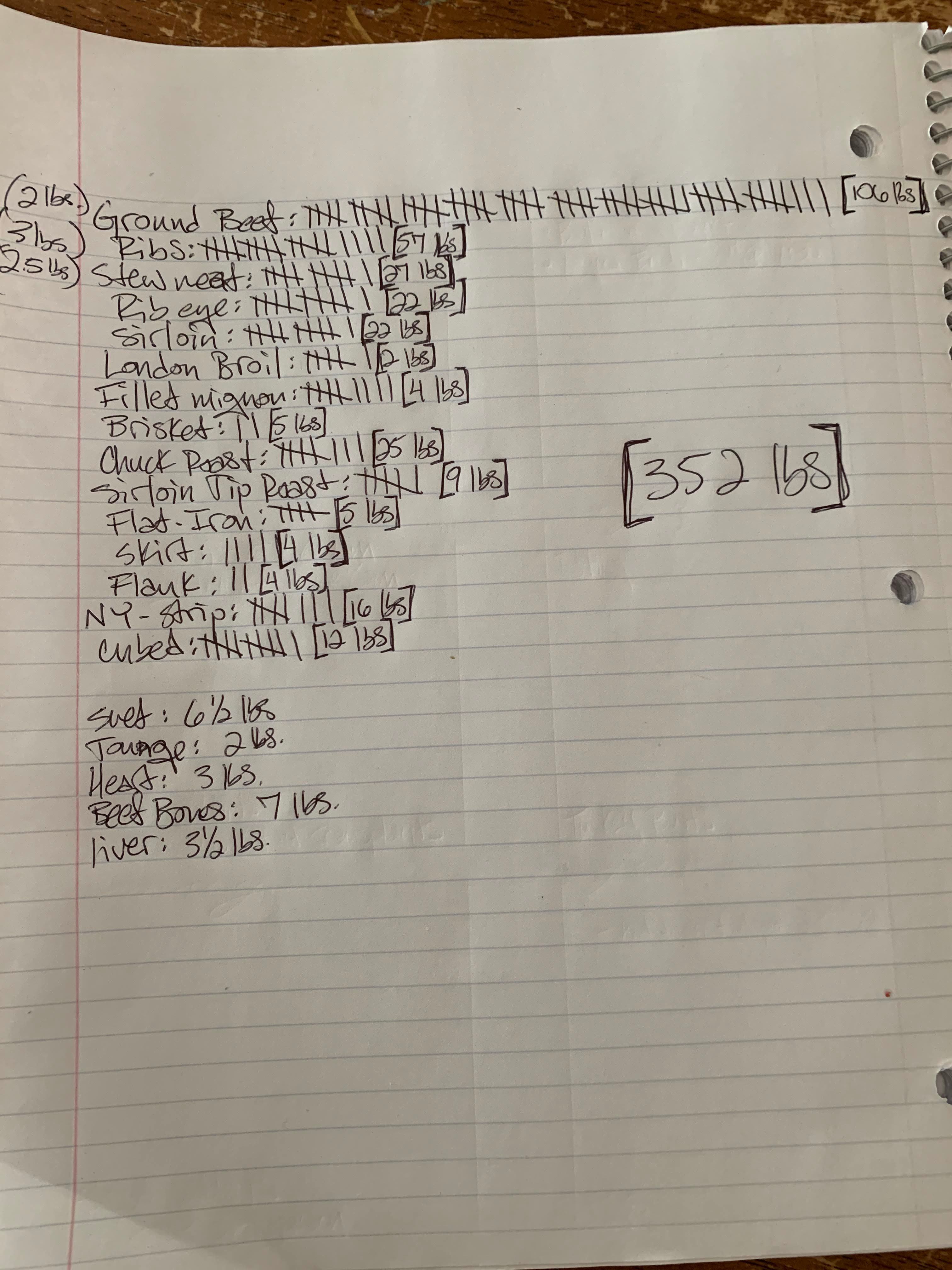
home-raised beef
2019-01-12
Living in the desert is not conducive to raising any meat animal larger than a goat. With all hay having to be shipped in from surrounding states where stuff actually grows, the cost is just not worth the end result. However, we moved somewhere where things actually grow and our hay situation went from $18 for 80-90 lbs of goat/cow quality hay to $30 for 500-700 lbs of similar quality hay. (Horse hay has to be higher quality because their digestive tracts are a bit more dainty). All of a sudden it made sense why people around these parts raise beef.
We bought our Jersey milk cow, Meushi, (That is how you say “a female cow” in Japanese, but our Southern friends think that “May” is a perfectly acceptable cow name so winning all around) about a month after we moved here and she spent that August with a very nice Angus bull named Toby. Well, we recently learned that he was a wild and ridiculously obnoxious bull but we didn’t have to load him in a trailer so it’s all good. May of 2017 (when Neil was traveling for work, naturally) I went to check on Mei and I could definitely see more legs through the trees than there were that morning. I called Neil and squealed and high-pitch-squeaky-noised in his ear and somehow conveyed that we had a calf. I ran to the house to get the kids, and miraculously it took about 3 minutes to decide unanimously that her name was Star.
Our first beef was in existence and we delighted in our early morning rounds of “find the calf” when Star would ignore the electric fence, wander off, get lost and plop herself down until we found her and took her back to her bellowing mama. As she got bigger those games got more exciting. There is nothing quite like chasing two escaped cows during a hurricane through your neighbors yard. Or getting the text from your sainted friend when you were in Ohio after she worked for hours to get them back in and the fence fixed. Definitely more exciting.
There is kind of a homesteading community idea that the animals we raise for meat only have one bad day and it’s really only a bad split second. As we don’t have a way to chill a side of beef, we had a local meat processor take care of that split second for us. Key Packing Company was great to work with and I highly recommend them.

When we arrived they wheeled out this cart and we started filling cardboard boxes in the back of the van. They didn’t provide a cut list since it varies so much between requests and individual animals. As we loaded, I had no idea what to expect on quantities or how to even gauge how much we had.

Are you a numbers person? I am when it come to my farm productions. Here are some numbers from our first go at beef: 40% of our cow came back as good eating. Which isn’t spectacular (pigs are closer to 60-70%)…but it sure is tasty.
- Live weight: 880 lbs at almost exactly 18 months
Hung weight (minus head, blood, and internal organs): 503 lbs
Wrapped edible delights (including heart, tounge, suet and liver): 352 lbs (approx. as I didn’t weigh each individual roast)
As we loaded the freezer I sorted things out and wrote down a list of what all we got. I’ve since been keeping a list of what has been used. Hopefully this week I’ll type up a much prettier way to keep track of all this…

That’s a 21.5 cubic foot freezer and aside from a few miscellaneous things, it’s all beef. That white-ish mass in the foreground is the rest of the suet, and under that is heart and tongue. What did people do before the internet taught them how to eat heart and tongue?